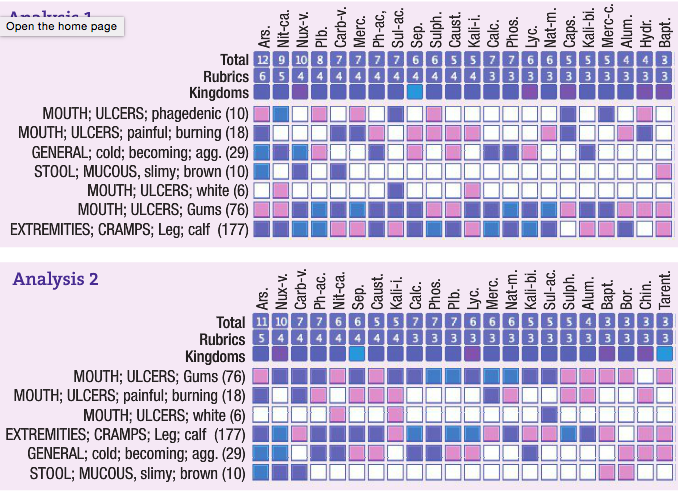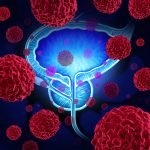Buccal Ulcers and Rubric
I look forward to the short day I schedule in the summer on Fridays. It’s kind of a relaxed winding down into the weekend. It is a pleasant delusion, at least.
Today was a great day at work. By that I mean patients seemed to be getting definitely better for the most part. In particular, a couple I had not seen for 10 years because they had moved several hundred miles away made the trip in for a consultation. There were recent health concerns.
I was about 10 minutes into investigating Dorothy’s case when there was a strange knock at the door. My associate’s receptionist reported that a patient at the front desk was saying he needed a refill on a remedy.
After excusing myself and walking toward the front desk, my face assumed a rather quizzical frown. Who was this person?
“Hello, I’m sure you won’t remember, but 2 years ago you treated me for a problem and cured it. Well, it seems to have come back just yesterday! I was hoping you would refill this bottle.”
The 0.5-drachm vial had a worn label, “Ars. alb. 30.” Sure enough, I did recognize the handwriting. I found the patient’s records in the ominously labeled “dead files,” and after checking the current symptoms, I refilled the bottle, with the instruction to come back if it did not work speedily. A quick nod and he was off to his weekend of struggling in G-20 Toronto Summit traffic.
The case slowly crept back into my aging memory. As it did so, a swell of interest followed. I again reviewed the single page that the patient record occupies. Now that I consider the remedy as confirmed (a cure of 2 years after a short course of 30C), there may be a useful point or 2 in this story.
Mason was 61 years old when he presented in 2007 on Halloween. He is a tall athletic man with a handsomely lined face and neat silver hair. His demeanor is impressive and well put together, a fitting appearance for the CEO for sales of a large local company.
The chief complaint was mouth ulcers since 2005. He had a history of appendicitis (surgery in 2003) and kidney stones (in 2001).
Mason reported large mouth ulcers that had come and gone but never resolved. He had consulted a specialist. The physician had expressed concern, “something is going on,” but was unsure what and did not offer effective treatment.
Mason had said, “The uncertainty made my daughter saddened and scared.” I did not quite buy that one. This case report is short but to the point.
When an ulcer appeared in the mouth, it “eats its way into a furrow,” said Mason. He reported that it had a whitish coating. The pain was a severe burning that was difficult to relieve. On inspection, I was a bit surprised to see a lesion about 1½ to 2 in long on his upper gums. It was angry and deep. He further reported that the lesions appeared mostly but not always on the left side.
Other symptoms included occasional cramps in the calves that could be lessened by walking and stiffness of his fingers in cold weather. He had been using lysine for several months at the request of his daughter, and it had improved the pain but not the frequency, intensity, or duration of the ulcers themselves.
Previously, when the pain and ulcers had flared significantly, his bowel movements were softer and contained brownish mucus. That’s it, folks, no more.
So let’s look at the homeopathic repertory chart, shall we (Analysis 1)?
Analysis 1
Arsenicum alba and Nux vomica seem to be neck and neck in this horse race, with nothing too compelling to differentiate them. However, what do we do make of Mason’s statement that an ulcer “eats its way into a furrow,” which was confirmed on observation?
In the old literature, an ulcer that eats its way along was called phagedenic, and there is such a rubric. When we add this to the mix, the clipboard looks like this (Analysis 2):
Analysis 2
Note that in this graph I have placed in the top 4 positions the symptoms I consider the genius of the case, as Hahnemann asks us to do. It becomes painfully obvious [sorry] that only Arsenicum alba fits.
The statement by the patient that his daughter was “scared” for him reinforced this remedy in my mind. I had no doubt about the prescription. The fact that the patient after 2 years had the chutzpah to come back to my office for a refill without scheduling a follow-up visit provides further retrospective confirmation. I have to admit that I hope he feels the need to come back for 200C.

In reviewing this case, if a student has not been clinically trained to address the full patient in a manner according to Hahnemann’s The Organon of the Healing Art, the symptom regarding stiffness of the fingers in cold weather would have been missed. Had the student not been trained in the homeopathic repertory and not had teachers available who were experts in the repertory, the phagedenic rubric would not have been used. If the student was not practically versed in the philosophy of The Organon of the Healing Art, differentiation using the concept of the genius of the case would be lost. Is it any wonder that in some schools there is polarization of students in an almost cult-like manner either toward the modern ”homeopathic” authors or away from this “airy fairy stuff”?
Homeopathy has not been taught for so long that even the clinical instructors really do not have a clue. In other words, practitioners do not know that they don’t know. As a responsible profession, can we passively accept this loss?
 Joe Kellerstein, DC, ND graduated as a chiropractor in 1980 and as an ND in 1984. He graduated with a specialty in homeopathy from the Canadian Academy for Homeopathy, and subsequently lectured there for two years. He also lectured in homeopathy for several years at CCNM; for eight years at the Toronto School of Homeopathic Medicine; and for two years at the British Institute for Homeopathy. Dr. Kellerstein’s mission is the exploration of natural medicine in a holistic context, especially homeopathy and facilitating the experience of healing in clients.
Joe Kellerstein, DC, ND graduated as a chiropractor in 1980 and as an ND in 1984. He graduated with a specialty in homeopathy from the Canadian Academy for Homeopathy, and subsequently lectured there for two years. He also lectured in homeopathy for several years at CCNM; for eight years at the Toronto School of Homeopathic Medicine; and for two years at the British Institute for Homeopathy. Dr. Kellerstein’s mission is the exploration of natural medicine in a holistic context, especially homeopathy and facilitating the experience of healing in clients.









